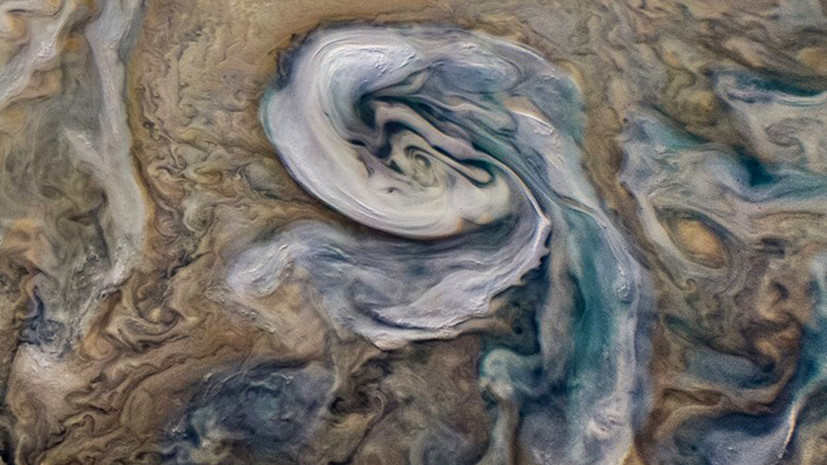Astrophysicists from the French National Center for Scientific Research (CNRS) and the US National Aeronautics and Space Administration (NASA), based on data analysis from the Juno spacecraft, found that there is hail on Jupiter, consisting of two-thirds water and one-third from ammonia. This has been reported in scientific publications in the journals Nature and JGR Planets.
Like on Earth, on Jupiter there is a process of cyclical movement of water in the atmosphere. A thunderstorm front on this planet is formed in the lower layers of its atmosphere. When a Jupiter storm gains strength, it lifts water ice crystals into the upper layers.
A new study by French and American scientists suggests that these crystals interact with ammonia in the upper atmosphere, which, in turn, acts as antifreeze and turns ice into liquid.
The resulting liquid mixture of 2/3 of water and 1/3 of ammonia does not freeze, withstanding cooling down to -100 ° C, and in liquid form sinks to the planet's surface. Passing through the upper colder layers of the atmosphere under the layer of ammonia gas, the drops turn into hailstones, and in the lower layers they melt again and turn into steam.
Researchers have developed a mathematical model that calculates the composition of ammonia in the atmospheric layers of the planet. According to their data, the highest concentration of this gas is observed above the equator of Jupiter, while at other latitudes its content decreases markedly.
Scientists also described flashes of lightning caught in the lenses of Juno's cameras. Unlike earlier observations, the new study describes even small lightning strikes seen in the deep layers of Jupiter's atmosphere, where temperatures are below -66 ° C, which means that water cannot exist there in liquid form. It is believed that the presence of liquid plays a key role in the lightning generation process.
This observation, according to astrophysicists, is a confirmation of the existence of non-freezing water, rich in ammonia, in the planet's atmosphere.
As scientists note, further study of the meteorology of Jupiter and other not yet explored giants, such as Uranus and Neptune, will allow a better understanding of the processes occurring on exoplanets far beyond the solar system.

